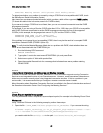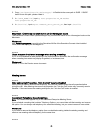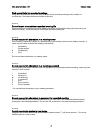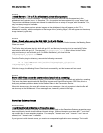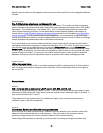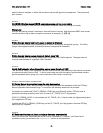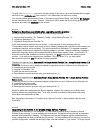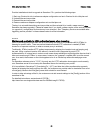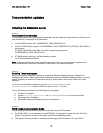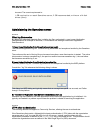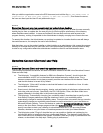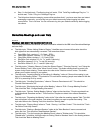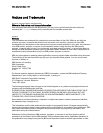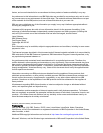IBM Lotus Sametime 7.5.1 Release Notes
After you add the organization name to the SSO document, and add the flag
ST_ORG_NAME=<name of
organization of Web site that appears in Web SSO document>, then restart the server;
the user can then input the User ID and password to log in.
Sametime
Sametime Connect plug-ins cannot install on locked-down desktop
When the Sametime client downloads new or updated plug-ins during launch, or when the user manually
installs plug-ins from an update site, the new plug-ins go into the plugins subdirectory of the directory
where Sametime was installed. In some environments, the user does not have write access to the
program directory, making it impossible for the Administrator to deploy new plug-ins or fixes to the user.
To remedy this situation, the Administrator can put plug-in updates in a location that the user will always
have write access to, for example, the user's home directory.
Note that when you run the product installer or silent installer as an administrator, this causes the program
directory to be made read-only for users who don't have administrator privileges, so this problem is likely
to exist in any configuration where the administrator installs the client for non-administrator users.
Sametime Connect Client end -user Help
Sametime
Sametime Connect Client end-user Help updates/corrections
The following list identifies corrections and other information related to the IBM Lotus Sametime Connect
Client end-user Help:
z
The Help topic, "Accessibility features for IBM Lotus Sametime Connect," should include the
recommendation to NOT turn on the tabbed chat window feature for multiple chats. This is
because screen readers do not always correctly read the user interface for this feature. Please
note that this feature is turned off, by default.
z
The Help topic, "Video calls" includes a note that this feature is not available on Linux. It is also
not available on Macintosh.
z
Some icons in the Help about managing, viewing, and participating in telephone conference calls
and video calls are incorrect. Specifically, the Call, Call Options, Video, and Mute Video icons
appear differently in the Help than in the product user interface.
z
The Help topic, "Automatically changing your availability status" describes how to specify on the
Auto-Status Changes preferences page the situations in which your availability status
automatically changes to another availability status. This topic does not mention that you can also
automatically change your availability status based on events scheduled in your Lotus Notes or
Microsoft Outlook calendar. To turn this feature on, select the Meetings scheduled in my calendar
event on the Auto-Status Changes page and then click Calendar Service in the navigator. Then
specify how often to check your calendar for scheduled events and, if you are using a Notes
calendar, whether to use your Notes or Sametime password to check your Notes calendar.
z
The Help topics under "Plug-ins" describe how you can enable or disable and update plug-ins,
including the ability to install plug-ins from a designated Web site. The feature to install plug-ins
from a Web site is not available in this release. In addition, there are no plug-in preferences in this
release, as described in the Help topic "Setting plug-in preferences."
79



